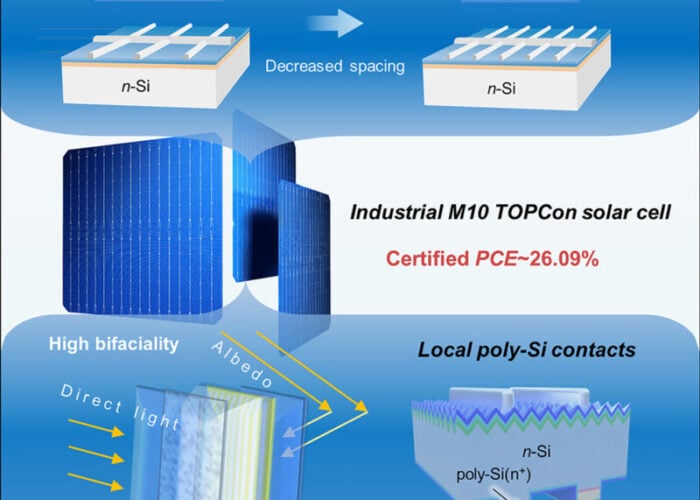Meyer Burger has agreed to supply a PV system incorporating the company’s newest heterojunction cell technologies (HJT) and bi-facial PV modules, to one of Switzerland’s biggest retailers.
Migros Aare Cooperative, one of a number of divisions of the Migros group, which provides retail services in the European country, has signed a project agreement with Meyer Burger for the PV equipment provider to design, manufacture and maintain an integrated solar power system using high-efficiency modules.
Try Premium for just $1
- Full premium access for the first month at only $1
- Converts to an annual rate after 30 days unless cancelled
- Cancel anytime during the trial period
Premium Benefits
- Expert industry analysis and interviews
- Digital access to PV Tech Power journal
- Exclusive event discounts
Or get the full Premium subscription right away
Or continue reading this article for free
The system, on the roof of an operations centre in Schobul, Switzerland, will be designed to feed the centre with power directly from the plant, generating around 900MWh of electricity a year, according to Meyer Burger. The plant’s 2,200 PV modules will include 500 Meyer Burger high-efficiency, high-performance bifacial heterojunction (HJT) cells, made using the company’s SmartWire cell connection technology (SWCT).
SWCT is low cost cell connection technology first launched by Meyer Burger in 2013, which involves using foil-wire electrodes instead of cell connector ribbons. Typically, 30 very fine copper wires are used for cell connection generating up to 2,000 contact points per cell that at the time of launch provided 5% higher power output compared to best-in-class 3BB (three busbar) technology, while reducing production costs.
Bifacial cells generate power from both sides of the cell’s surface, capturing reflected light hitting the back of the module in what is called the Albedo Effect. HJT cells meanwhile see amorphous silicon applied in thin layers to both sides of n-type silicon wafers along with a transparent and conductive oxide to absorb power. In August, Swiss/Hungarian silicon thin-film equipment and technology firm EcoSolifer put in an order to Meyer Burger for a 90-100MW heterojunction (HJ) solar cell line, while French research centre, Alternative Energies and Atomic Energy Commission (CEA) bought HJT and SmartWire equipment from the company in April.
Meyer Burger officially opened its HJT production line in late 2014, PV Tech reported. The company says it will launch HJT and SWCT for its equipment customers in Switzerland during 2016. Recently, Meyer Burger issued a huge sales target for the second half of this year that it claims will help the company to a breakeven position by the end of the year.






